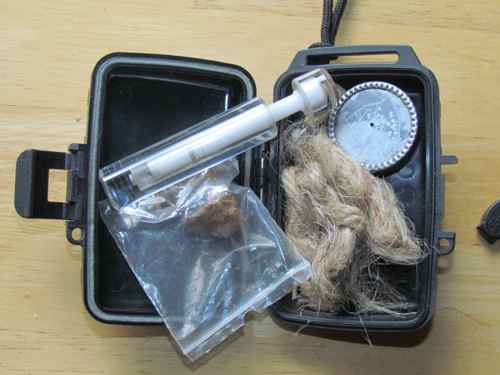Have you ever heard of a fire piston? Western society’s history came incredibly to this being a common household term.
The story goes that British or American sailors observed natives of the South Pacific making fires with an ingenious tool. A practiced user could make a fire as fast or faster than a person using flint and steel with a tool that can be used wet or dry.
A fire piston is a handheld cylindrical device with a short, round shaft that tightly fits into a hole, creating the eponymous piston. Just as a diesel engine piston does, the fire piston uses quickly compressed air to ignite a small piece of tinder (as opposed to liquid fuel, in the diesel engine) creating a coal from which a fire may be kindled. The user slams the top of the piston sharply against a hand, a leg, or the ground to instantly compress the air, heating the tinder to ignition.
The sailors bought or traded for fire pistons, learned how to use them, and returned home to their families, carrying this exciting item that would revolutionize home fire making. Indeed, it would change western society as a whole!
When they got home, their loved ones had an amazing new tool to show their returning men: the newly developed sulfur match.
About the time we found our “homestead,” we learned to use flint and steel to start fires. We were looking for ways to reduce or eliminate dependency on commercially-produced products, including matches. I found out about fire pistons, and purchased one for each of us.
I especially liked the survival aspect of the fire piston. Carried in the pocket, with a piece of tender inside the hole, it would make a fire in an emergency, say falling overboard and climbing ashore. It seemed much more useful than a packet of soaked matches.
We made a rule that only fire pistons could be used to kindle fires in our wood stove. I intended that we become very adept at the method before moving to the “homestead,” where I hoped we would not need matches.
We got very good at it. Unfortunately, our pistons were made of plastic, and they began to wear out. I had learned that wrapping the shaft in silk thread helped, but soon discovered that locating silk thread in Juneau was next to impossible! Finally, a friend of a friend gave me enough thread from her own stash to supply my needs.
The tinder used in a fire piston is a fungus called “chaga.” We have learned that this is essentially a shelf fungus that grows on birch trees. It’s everywhere in our forest!
Even so, we ended up going back to matches, I’m afraid. We still have our fire pistons, stored in small otter boxes™ for easy carry, along with bits of chaga, charred cloth to catch the spark, unraveled hemp rope for tinder, and cleaning tools.
One of these days, I intend to try making my own fire piston. The trick will be making the shaft and hole to fit well enough to create the heat when struck. If I can improve on my worn piston (the manufacturer of which has since gone out of business) I may get back to using them regularly in place of matches.
That may eventually become necessary. We’re having trouble finding strike anywhere matches. Apparently, no one wants to ship them because they might ignite en route! A day may come when it’s either strike on box, which I despise (see Celebrating a Micro-Milestone) or the fire piston.


interesting article – I knew about fire pistons but did not know how they worked – now I know – been following your blog on a regular basis but did not have any comments lately – take care
Went. To Amazon.com and put in fire piston and several kind came up. Did the same with strike anywhere matches and several options came up. Love your blog.
Leroy, I haven’t looked at Amazon for matches, but I’m finding a whole lot of things on there that can’t be shipped here anymore. I assume that’s one of them. After all, the headlines are constantly full of stories about match boxes that have spontaneously combusted in flight, right? My sister drove/ferried to Alaska last week, and she brought us some of that “dangerous” contraband!
There are some interesting options on fire pistons out there these days, some of them even reasonably priced. I’m considering an upgrade.